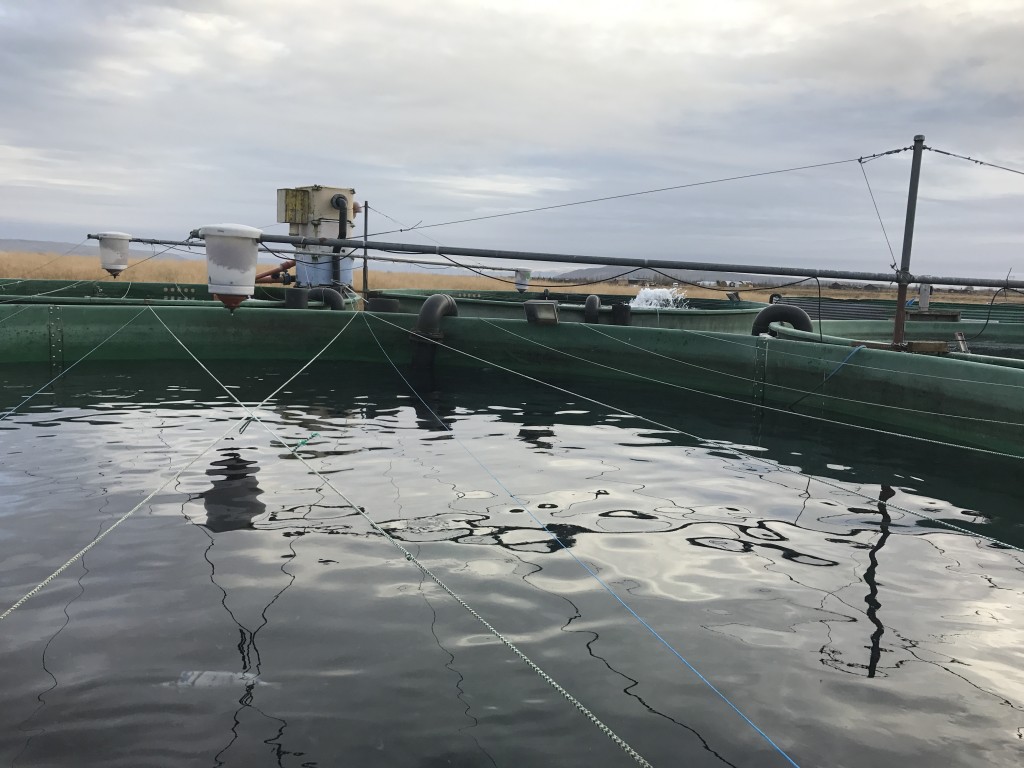On October 30th, we visited an aquaculture farm about 20 minutes from Solheimar. We met with Gusti, one of the workers at the farm, and he guided us through the process of raising Arctic char. This particular farm is not a hatchery, meaning that the fish arrive as fingerlings which have been hatched in a different location. Gusti told us that the farm keeps the fish until they are two to three years old. In the wild, Arctic char can live to more than 20 years old, which sticks out to me, because here the fish are harvested very early on in their lives. According to Ministry of Industries and Innovation, as of 2014, there were 53 fish farms in Iceland. Fish farms are common in Iceland because the isolation of the island allows for relatively disease-free waters.
Going into the visit, I was curious about the type of fish food fed to the Arctic char. It was interesting to hear that the majority of the pellet food is made up of soy, corn, gluten, and wheat. None of the ingredients are GMO, which in my opinion is a positive thing. Gusti also talked about the pickiness of the fish. He told us that Arctic char fish are very selective of what type of food they eat and when. I was curious after about what a typical Arctic char would eat in the wild. I found that in freshwater, their usual diet consists of copepods, caddis, snails, plankton, freshwater shrimp, salmon eggs, and smaller fish. It is thought-provoking that the diet of farm raised fish varies so much from freshwater, which is mostly other living things.
Another question that I had going into the tour was asking about the light that the fish require. When I first walked into the tank area, I noticed that it was sealed off from outside light. At this farm, the fish are kept on a pattern of stable, artificial light. This is to prevent the fish from being exposed to sunlight and the natural time of sunrise and sunset. If they do receive daily sunlight, they will begin to recognize seasons. Gusti taught us that in the case of Arctic char, if the fish begin to recognize the seasons, they will mature at a different rate and be lighter and skinner, which is less ideal for selling. Only when the fish are ready to be sent and processed, do they swim in a tank outside. Personally, I would rather see these fish swimming freely in their natural environment, but after my visit, I am more comfortable with aquaculture fish farms as a source of food.
Abby MacKenzie
“Arctic Char: Salvelinus with Attitude.” Plummers Arctic Lodges,
www.plummerslodges.com/arctic-char-salvelinus-attitude.
“Aquaculture.” Ministry of Industries and Innovation,
eng.atvinnuvegaraduneyti.is/fisheries/aquaculture/.

